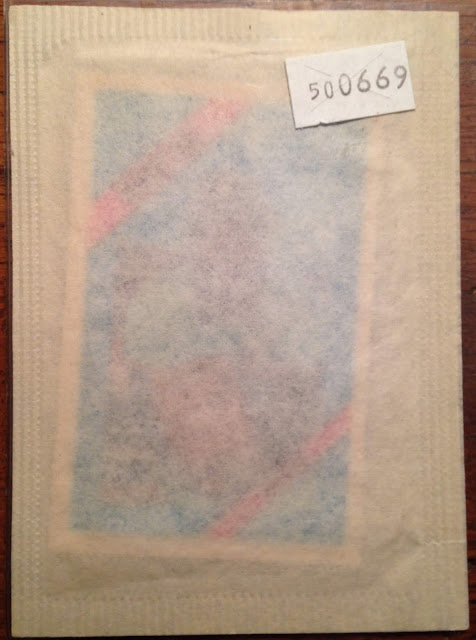Kellogg's seemed to change their packaging process for these individual cards in 1979. Below is a 1972 card. Notice how machinery was used to create the grooves around the edge of the card. Outside of the edges of the card's location there is a bit of a bubble. It holds the card in place and makes the entire pack a bit thicker than it would be otherwise.
Here is a 1979 card. The bubble seems to have disappeared but the edges are still grooved by some kind of machinery. The 1979s are also now more a dirty, tan color than white.
Here is a 1980 card. The same dirty, tan color from 1979 is used where there really is no extra space allotted for the card - no bubble. Xograph also didn't use machinery to create any grooves in the packs in 1980. That's probably why they don't stay sealed as well as every other year.
Without the grooves the two pieces of paper that make up the wrapper are more likely to have some separation. Check out a side view of this card below to see how easily the wrapper can separate. Notice the left side of the card shown below. This doesn't happen at all for any other year of Kellogg's cards.
They even had the grooves in the 1970 Rold Gold cards shown below.
In the 1990s the company went to a process that is seen with modern products. The pack is connected in the back
Here is the back of one of the cards from the 1990s.








Love the Ruth with the title "Greatest Ever".
ReplyDelete